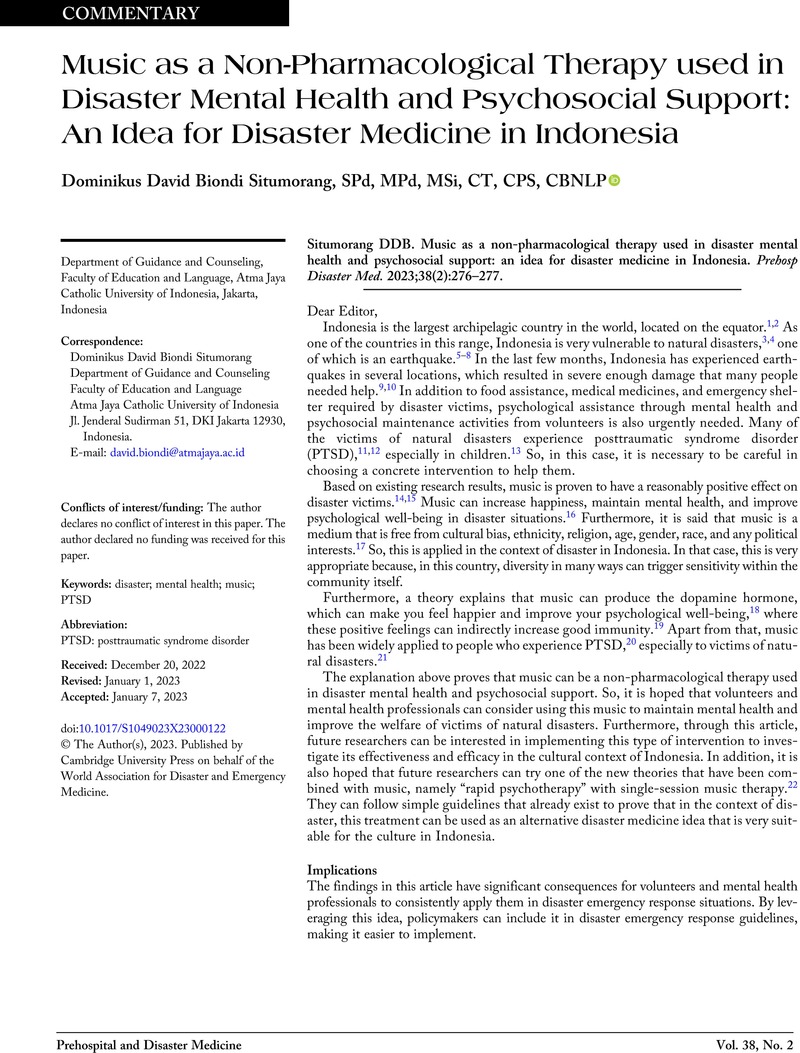Crossref Citations
This article has been cited by the following publications. This list is generated based on data provided by Crossref.
Putra, Bela Janare
Saputra, Rikas
and
Situmorang, Dominikus David Biondi
2023.
Non-Pharmacological Cooking Therapy: An Idea for Recovering the Mental Health of Adolescents as Disaster Victims of Mount Merapi Natural Eruption in Yogyakarta (Indonesia).
Prehospital and Disaster Medicine,
Vol. 38,
Issue. 4,
p.
544.
Noviana, Eddy
Faizah, Hasnah
Mustafa, M. Nur
Elmustian
Hermandra
Kurniaman, Otang
Rusandi, M. Arli
and
Situmorang, Dominikus David Biondi
2023.
Understanding 'Tunjuk Ajar Melayu Riau': Integrating local knowledge into environmental conservation and disaster education.
Heliyon,
Vol. 9,
Issue. 9,
p.
e19989.






